NASCAR's Next Gen Cup Car Is a Revolution in a Sport Built on Evolution
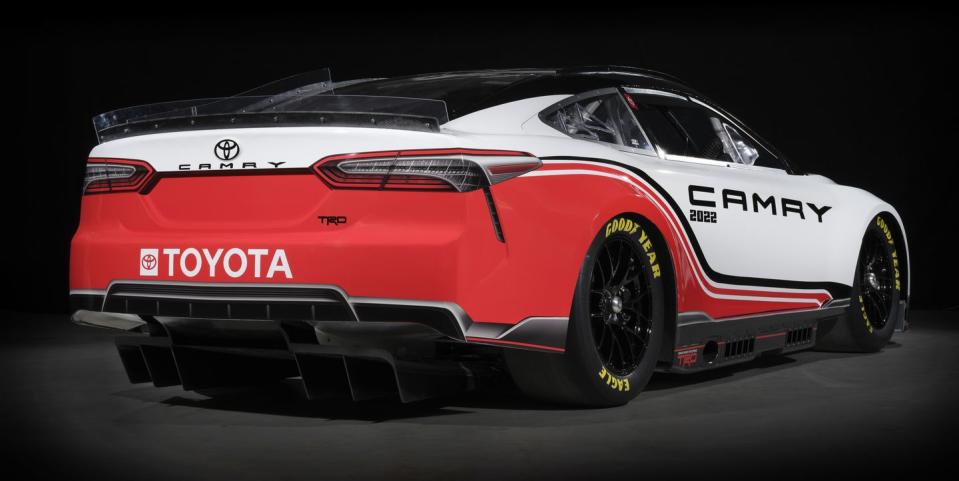
NASCAR has followed a similar formula of using a four-speed manual gearbox and a live rear axle in the Cup series since its inception. That all changes with the reveal of its Next Gen car. The traditional components are gone, replaced by a sequential transaxle and independent rear suspension along with a variety of other changes, including the introduction of spec parts from specialized suppliers.
NASCAR has been working on the Next Gen car with Chevrolet, Ford, and Toyota and a variety of new vendors for more than two years. This is one of the biggest changes that stock car racing has ever seen, a revolutionary change in a sport built on evolution.
We were able to get a closer look at the Toyota TRD Camry Cup car and speak with David Wilson, President of Toyota Racing Development USA, and Andy Graves, the Executive Engineer Technical Director at TRD. According to Wilson, the industry agreed that change was necessary from the current business model and car and that an “evolutionary step” would not be good enough. That’s why all of the industry partners decided to take a clean sheet approach in order to upgrade the car from a technological perspective. Graves said that NASCAR investigated a variety of platforms a few years ago, from things like GT3 cars to Australian Supercars, in order to get inspiration for Next Gen.
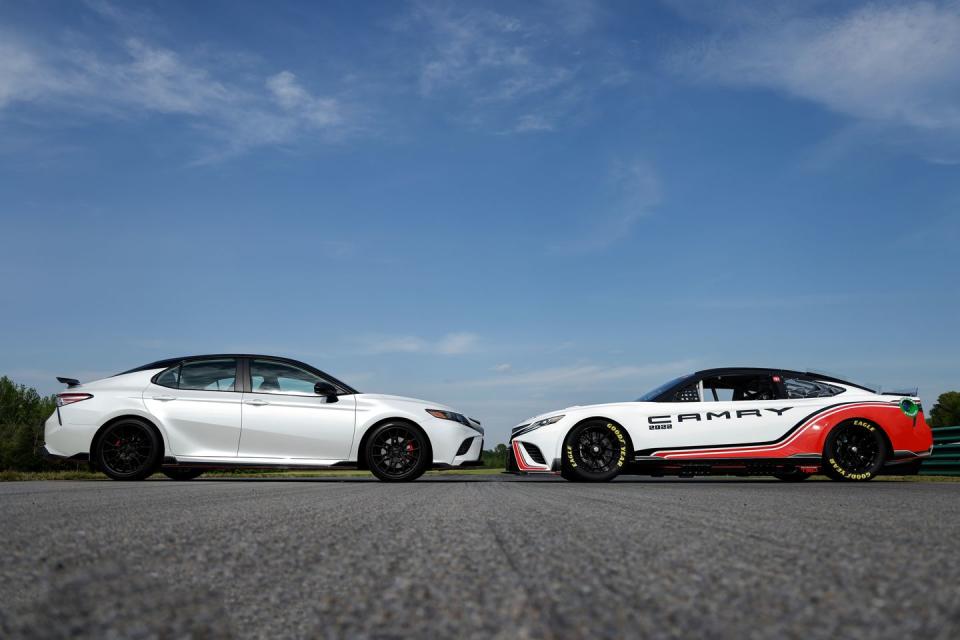
The first thing that is readily apparent when viewing the Next Gen car is, like those GT3 and Supercars race cars, it now sports single-lug 18-inch aluminum wheels, a big change from the 15-inch five-lug steel wheels on the current car. It’s one of the many visible changes that help the Cup cars better reflect their production car counterparts. Graves said it was “important for TRD and Toyota that they were closer in technology to current production cars.” The move to a GT3 style single lug wheel will take away the penalties for missing lugnuts that fans might be used to, but pit stop choreography should remain fairly similar.
The body is now symmetrical, a large departure from the last few generations. It was previously an asymmetrical design in order to maximize air flow advantages based on what the rule book allowed. The whole body of the Next Gen is composite versus the combination of composite hood and trunk with sheet metal sides found on the current generation of the car. The hoods have been updated with radiator duct exits similar to what can often be seen on sports cars. Graves said that hood ducts were one of the items that received inspiration from another area where Toyota races. The team at TRD were able to study the hood duct exits on the Lexus RC F GT3 when working on the Camry’s design.
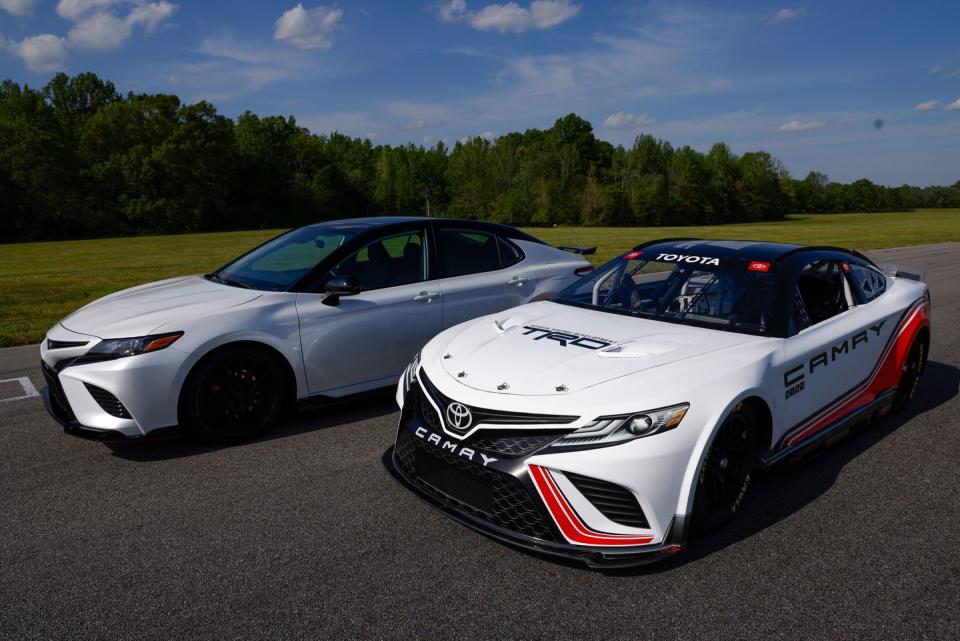
The Next Gen TRD Camry Cup car looks much more similar to the production Camry, first because it’s now symmetrical, but also because many design elements–like the front and rear bumpers along with body lines–are now nearly identical to the road car. According th Graves, the design of the greenhouse to more closely match the production car was important, along with making changes to elements like the rear overhang to more closely match the production car. The Next Gen TRD Camry Cup car was designed in a collaboration between TRD and Toyota’s Calty design studio which also designs production cars for Toyota and Lexus, so the similarities are not surprising.
The dimensions are also very close with the 2022 Toyota TRD Camry. The 193.3 inch overall length is less than an inch longer than the production car while the 110-inch wheelbase–shared with the current generation stock car–is 1.2 inches shorter than the road car. The biggest difference comes in width. The race car is 78.4 inches wide, a full six inches bigger than the production car. That’s because the big fenders hide 365 section width tires, roughly four inches wider than the outgoing 28/10-15 Goodyears.
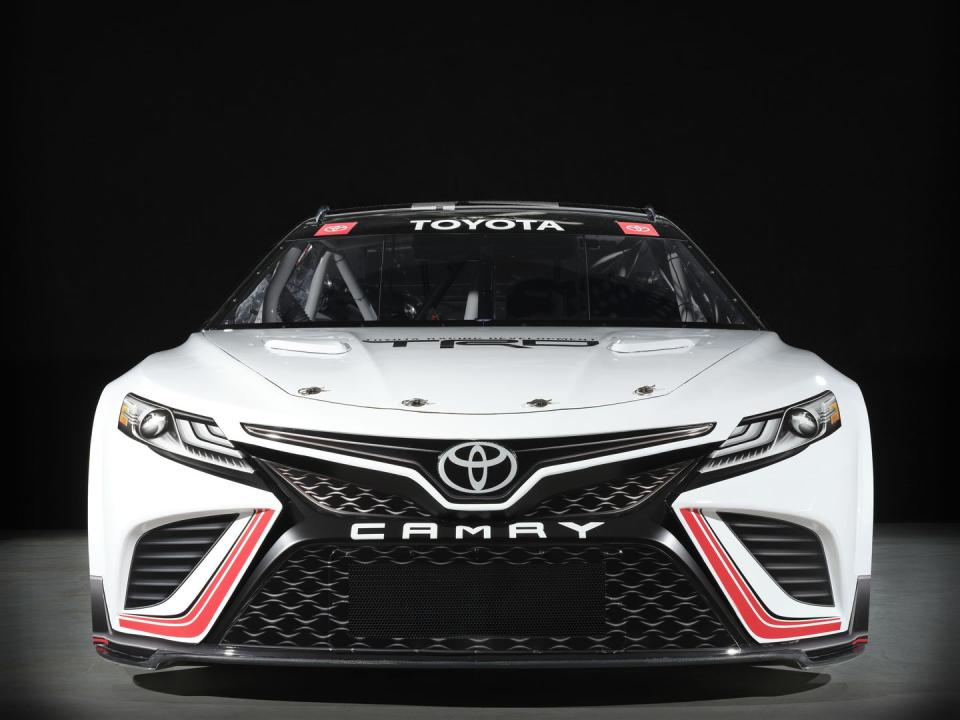
The bottom of the car is completely new, now with a full-length flat floor and finished with a rear diffuser much like what we’re used to seeing on GT3 cars. Current Cup cars feature a mostly open bottom, and then teams would develop pieces like the engine oil pan and even suspension components to form a flat floor when they were at speed.
Even the chassis is a spec part that comes in three pieces: a center section and front and rear clips that bolt to it. That means teams will no longer fabricate their chassis but will assemble them from kits. The numerous spec parts are intended to reduce costs and help make smaller teams more competitive. The chassis and supporting components have been developed with safety improvements in mind. That center section received additional roll bars to improve crash protection and the seat has been relocated to bring the driver closer to the center of the car. Like their production car counterparts, the front and rear of the Next Gen cars will now feature foam inserts between the chassis and the nose and tail in order to provide additional safety. Roof and hood flaps, a current safety feature meant to keep cars on the ground during spins at high rates of speed, will appear on the Next Gen.
While most of the car is a revolution, the engines aren’t downsized or turbocharged. The traditional V-8 will continue to live under the hood. The blocks and rotating assemblies have mostly been carried over, but some external modifications had to be made like different oil pans and exhausts, mainly due to packaging and routing differences. Engine packages will now come in two flavors and will be tuned for either 550 or 670 horsepower, depending on the track. The engine air intake is no longer in the cowl area directly under the windshield but has been relocated to the front grille.
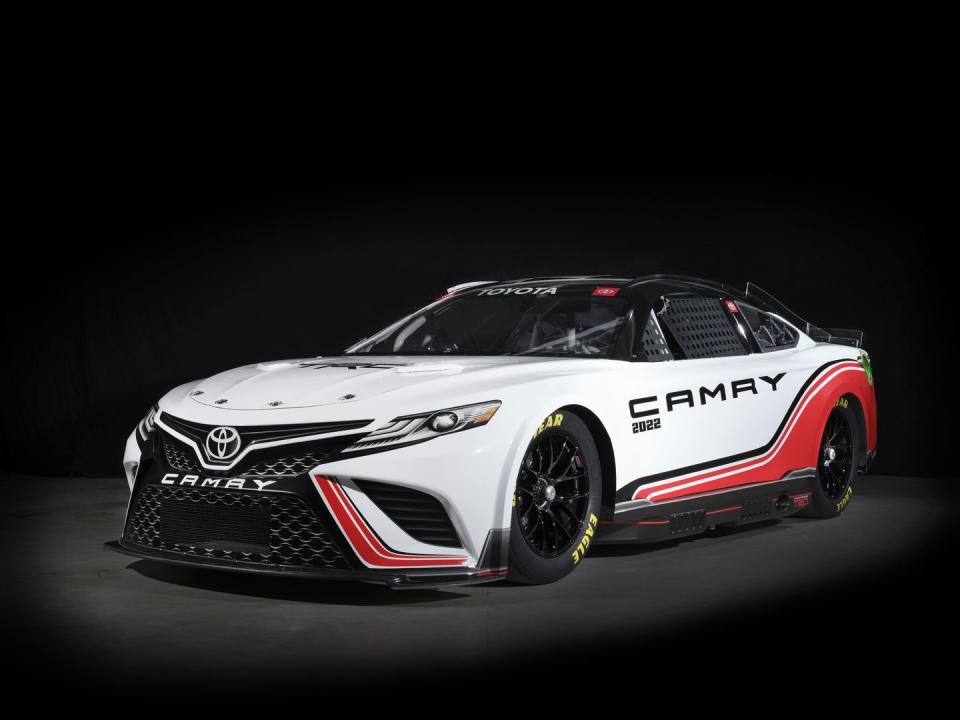
The cars will sound different as the exhaust pipes no longer end up on the same side. Instead, each bank now independently exits on its respective side of the car. The headers go to a collector that sends the pipes behind the front tires and into the rocker panels. Although the driver is no longer sitting on top of a pipe that merges the two banks, heat has proven to be somewhat of an issue due to the proximity of the pipe on the drivers side. Some vents were added to blow air over the exhaust in an attempt to mitigate the heat.
The four-speed manual transmission that used to be directly behind that engine has been replaced by a prop shaft that leads to the back of the car where you’ll find a five-speed sequential transaxle from Xtrac. That transaxle is surrounded by another first: an independent rear suspension. The shocks and springs are no longer independently mounted but are now of a coilover design. They’re connected to control arms that are attached to aluminum uprights, much like what you find on a GT3 car. According to Wilson, the coilover design of the suspension was an important element for TRD. Like the wheels, it was another item that more closely matched the configuration of the production car.
Next Gen is built to be future-proof. While we are in the very early days, Graves told us that TRD and Toyota have a lot of interest in hybrid powertrains and that the Next Gen car is “package-protected” for future hybrid implementations. There’s space for a battery and the capability to add an MGU to the transaxle. Wilson agreed that electrification and hybrid powertrains are important, and while they have accomplished a massive change with Next Gen they believe that there is still room for evolution. Wilson noted that the OEMs and NASCAR are talking almost weekly about future technologies and making sure that they’re keeping the current car market in mind.
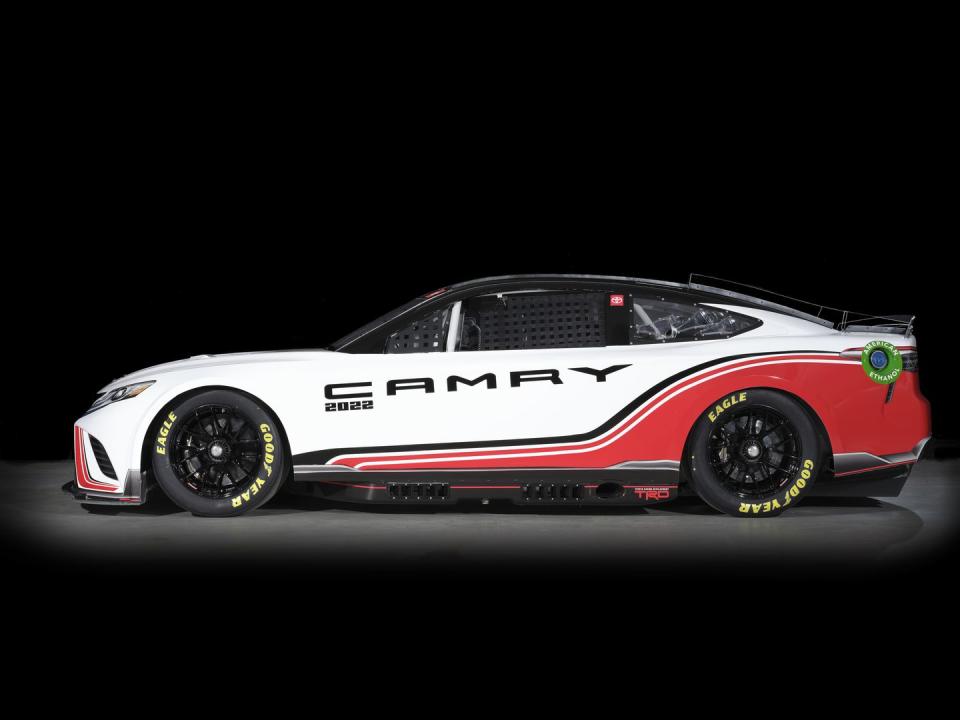
According to Wilson, once the industry gets over the initial chassis and aero hurdles Next Gen presents, the next piece under discussion is where to go with engines in the future. Hybrid implementation is part of that equation, but the engines themselves are likely to see an eventual redesign. We asked Wilson to give us an idea of where TRD is looking when it comes to engines and he was very frank to share that TRD is “not married to anything” and they would “take a real hard look at a V-6.” Wilson said that all of the OEMs have V-6 engines and that “the direction has been smaller, more efficient engines” that are in many cases “married up to some sort of hybrid component.” Wilson said he wouldn’t be surprised if the new engine was a V-6 or maybe a smaller displacement, more-efficient V-8.
Wilson would like to see a clean sheet design for the next engine formula. His fantasy idea of a potential engine would involve starting with an aluminum block and multi-valve overhead cam heads and employing technologies like direction injection, maybe even married to a turbocharger. These would be relevant technologies to production cars, but Wilson was careful to note that these are just potential future ideas and that TRD’s focus right now is to get the Next Gen car on track.
When asked what we might see that could change in NASCAR to go along with theNext Gen over the next 5, 10, or even 15 years, Wilson said they are proud that Toyota is the only OEM to run different nameplates in the three NASCAR series and that they want to build on that to further reflect the consumer market. Irrespective of brand, Wilson said the vast majority of vehicles sold are crossovers, SUVs, and trucks, which is why they’ve had “healthy conversation” about potentially racing a body that looks like a crossover or SUV in order to “mirror what they sell day in and day out.” They want to take a holistic view of NASCAR and a crossover or SUV body could possibly be put into use in something like the Xfinity series. Wilson closed by stating that “as a stakeholder, NASCAR has been very respectful and interested” in this dialogue.
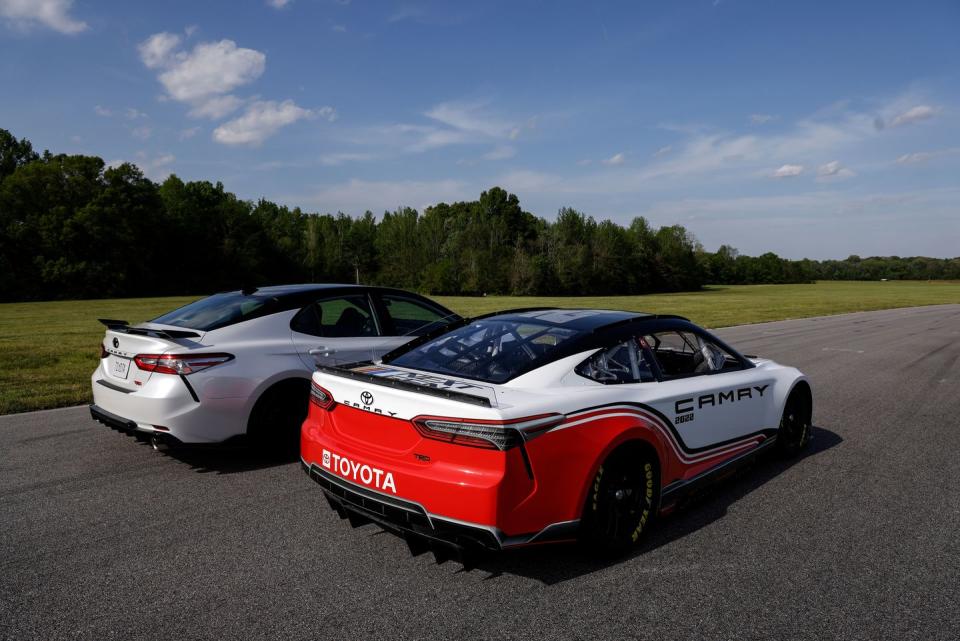
While many of these ideas might be years out, the Next Gen car is here with many new elements to explore, and it will bring a revolution to the NASCAR Cup series both from a technical perspective and a financial one. The 2022 Daytona 500 will be its debut, but teams are already receiving parts. We’ll see more of these cars being assembled over the next few months and should see all the brands hit the track for testing soon.
You Might Also Like

 Yahoo Autos
Yahoo Autos